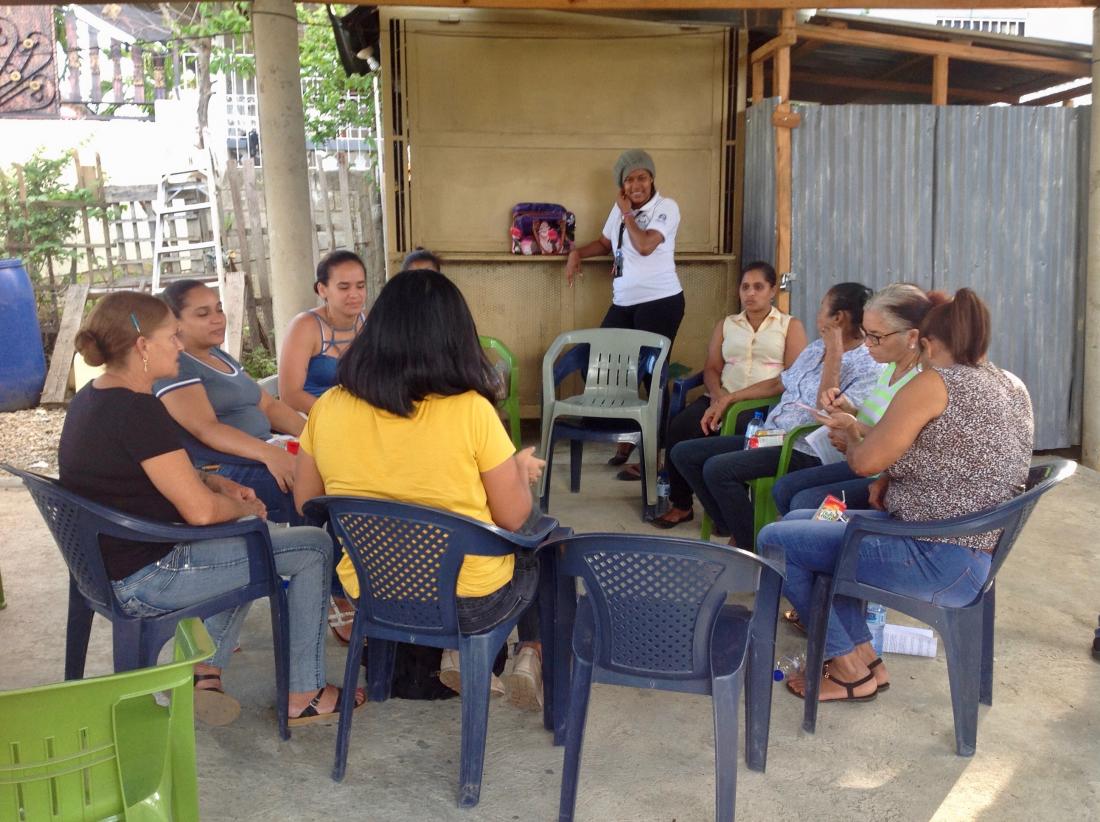The Impact of a Women-Specific Credit Scoring Model on Women’s Access to Credit in the Dominican Republic
- Men and boys
- Women and girls
- Discrimination
- Credit
Low-income women disproportionately lack access to credit in developing countries, often because they are less likely to have credit histories, property rights, or formal earnings. Researchers are partnering with a bank and a mobile money operator in the Dominican Republic to evaluate the impact of credit scoring models designed specifically for women on access to credit.
Problema de política pública
Low-income women disproportionately lack access to credit in developing countries, often because they are less likely to have credit histories, property rights, and formal earnings, common inputs to a credit score. These gender-specific barriers restrict women’s economic activities and resources and may impact their decision-making power within their households. Traditionally, banks construct credit scores by pooling data from both men and women without fully considering how gender influences the inputs to these credit scores. Standard credit scoring models may exclude potentially credit-worthy women from accessing credit.
In recent years, “nontraditional” data––from mobile phones, social network activity, and mobile money transactions––have enabled new ways to assess the creditworthiness of people who have historically lacked access to formal credit. For example, using mobile phone call detail records (CDR) to assess credit worthiness may be a potential solution to expand women’s access to credit and overcome the credit gender gap. Little research exists on the impact of increasing access to credit for women who would not qualify for credit by traditional screening. By developing and evaluating a novel algorithm, this research seeks to provide evidence on how to effectively expand access to credit for women and potentially increase their financial empowerment.
Contexto de la evaluación
Like many women in other developing countries, low-income women in the Dominican Republic face various gender-specific obstacles in accessing formal credit. For example, among married couples in the Dominican Republic, the husband is legally recognized as the household head and has exclusive ownership of family property. This type of law hinders women from building credit histories, which in turn limits their access to productive assets and to credit during emergencies.

Detalles de la intervención
Researchers are partnering with Asociación La Nacional de Ahorros y Préstamos, a large bank, and a mobile money operator to build a women-specific credit-scoring model and evaluate its impact on women’s access to credit and other outcomes such as control over assets, work activity, household dynamics, intimate partner violence, ability to cope with risk, and well-being.
The research team is using 19,000 client authorizations for CDR data from the mobile money operator and existing client data from Asociación La Nacional de Ahorros y Préstamos on bill payment histories to build a machine learning model, which only incorporates data from women, that will predict creditworthiness and generate credit scores. Researchers will use this new algorithm to conduct a randomized evaluation that assesses whether women rejected by standard credit scoring models would benefit from credit access and how the benefits of access to the different models compare. The outcomes will be measured six months after the client applied for and received or did not receive credit.
To conduct the evaluation, female applicants for the credit product will first be assigned a credit score under both credit scoring models (standard and women-specific), which will yield four groups:
- Women who could receive credit under both credit scoring models (women in this group will receive credit but will not be included in the randomized evaluation)
- Women who could receive credit under the women-specific model only
- Women who could receive credit under the standard model only
- Women who do not receive credit under either model (these women will also be excluded from the randomized evaluation)
Researchers will then randomly assign women in groups two and three to either receive access to the credit product or not. This design will enable the research team to measure whether women who would have been rejected by traditional credit scoring models benefited from the credit. The research team will also assess if implementing the women-specific model disadvantages any women who would have been approved only under the standard model.
Resultados y lecciones de la política pública
Study ongoing, results forthcoming.

